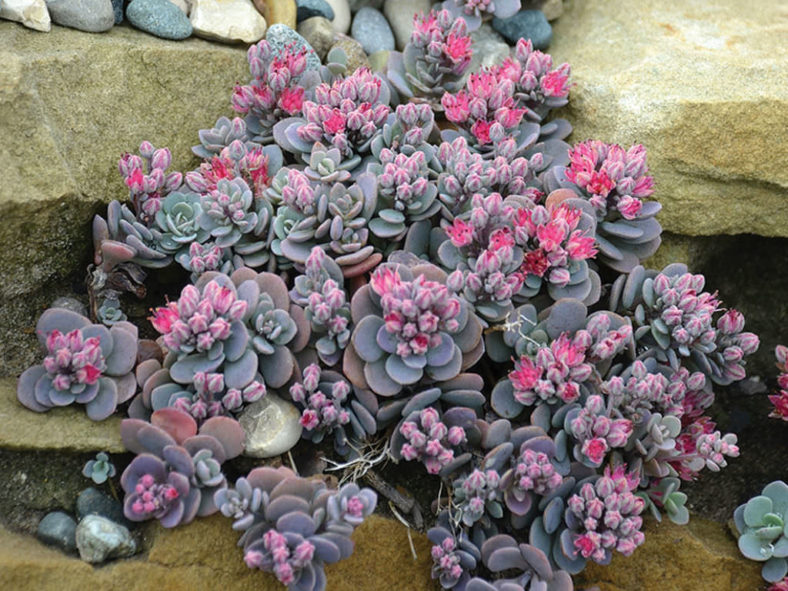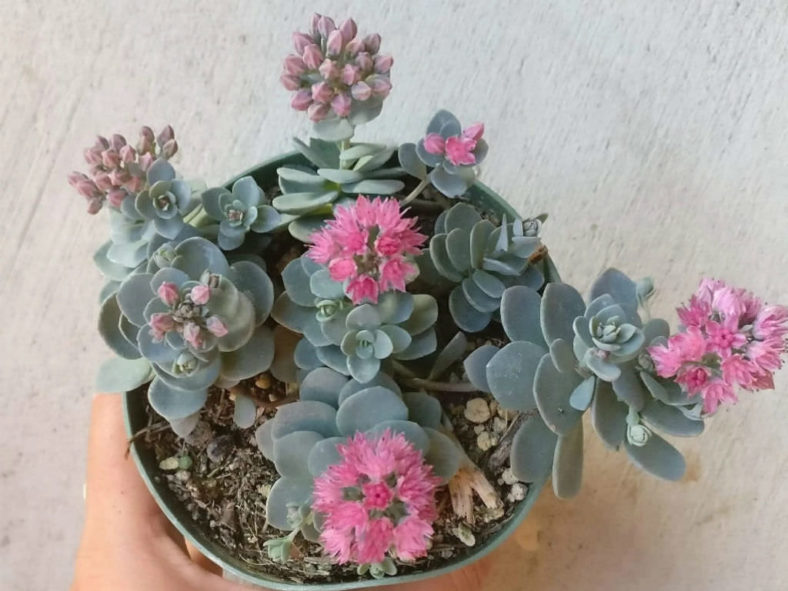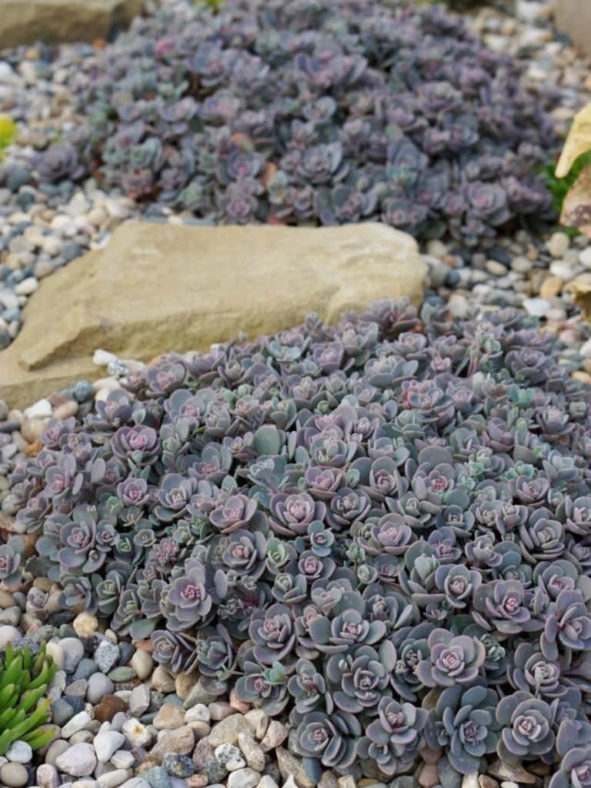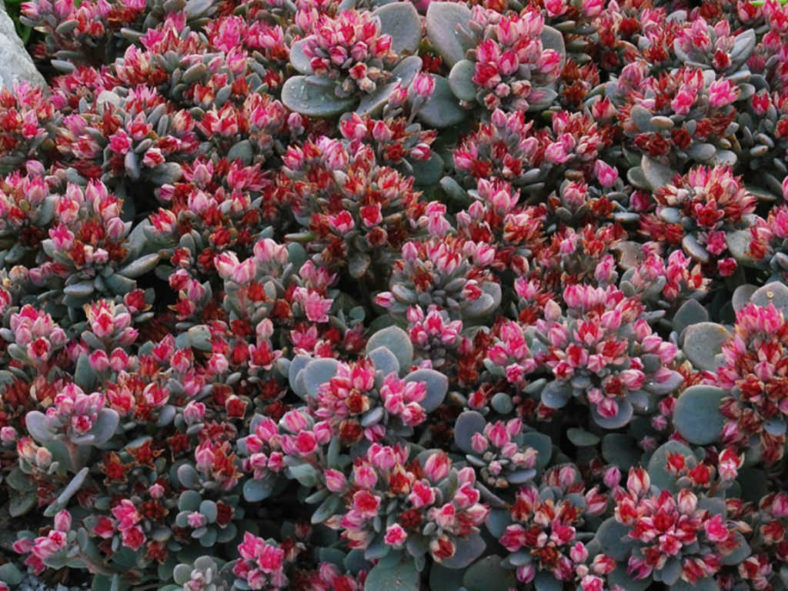Scientific Name
×Hylostachys 'Blue Elf'
Synonym(s)
×Hylostachys 'Blue Elf' SunSparkler®, ×Sedoro 'Blue Elf', ×Sedoro 'Blue Elf' SunSparkler®
Scientific Classification
Family: Crassulaceae
Subfamily: Sempervivoideae
Tribe: Telephieae
Nothogenus: ×Hylostachys
Origin
×Hylostachys 'Blue Elf' is a part of the SunSparkler® series from the breeding work of Chris Hansen. Its parentage was originally indicated as Sedum × Orostachys, but the breeder used a species of the genus Hylotelephium, not Sedum, which means the correct parentage is Hylotelephium × Orostachys. The breeder's chosen name, ×Sedoro 'Blue Elf', is invalid because it does not follow the naming rules for a nothogenus (hybrid genus). The name should involve the first part or whole of one name and the second part of the other, but in this case, the breeder combined the first part of both.
Description
×Hylostachys 'Blue Elf', also known as ×Sedoro 'Blue Elf', is a mat-forming succulent that can grow up to 3 inches (7.5 cm) tall and spreads up to 16 inches (40 cm) wide over the first year. The tufted rosettes of steel blue leaves come from the Orostachys parent, while the pink flowers come from the Hylotelephium parent.
Clusters of fragrant, dark pink flowers cover the plant foliage in late summer.

Hardiness
USDA hardiness zones 4a to 9b: from −30 °F (−34.4 °C) to 30 °F (−1.1 °C).
How to Grow and Care
The genus Hylotelephium may not be familiar to many of you, but most gardeners have seen or are growing these succulents without knowing it. That is because this genus was once part of the genus Sedum. Species in the genus are popular garden plants known as "Border Stonecrops" or "Border Sedums."
Hylotelephiums will thrive in conditions many other plants thrive but will do just as well in less hospitable areas. These plants are ideal for that part of your yard that gets too much sun or too little water to grow anything else. They also grow well in containers.
Border Stonecrops prefer full sun. They tolerate light shade in hot summer climates but produce weak, floppy growth when grown in too much shade or overly fertile soils. Plant them in an area of your garden with 6 hours of sunlight daily.
These succulents succeed in most soils but prefer a well-drained potting mix.
Hylotelephiums are drought-tolerant plants. The best way to water them is to use the "soak and dry" method. First, get the soil completely wet, and then wait until the soil is dry before watering again.
Learn more at How to Grow and Care for Hylotelephium.
Links
- Back to nothogenus ×Hylostachys
- Succupedia: Browse succulents by Scientific Name, Common Name, Genus, Family, USDA Hardiness Zone, Origin, or cacti by Genus
Photo Gallery
Click on a photo to see a larger version.


